Tuesday, May 28th 2019

Intel "Ice Lake-Y" MCM Pictured Up Close
Here are some of the first pictures of the 10th generation Core "Ice Lake-Y" multi-chip module, designed for ultra low-power platforms, such as notebooks and 2-in-1 convertibles. These chips have a TDP target as low as 8W to 15W, are built in a BGA (ball-grid array) MCM (multi-chip module) to minimize Z-height and conserve mainboard PCB real-estate, respectively. The larger dies of the two of course is the 10 nm "Ice Lake" SoC with 4 "Sunny Cove" CPU cores, and a Gen11 GT2 iGPU. The smaller die is the PCH (platform controller hub), or chipset. The RVP (reference validation platform) is a motherboard that lets you test every possible connectivity option of the platform, by manually switching around PCIe lanes, SATA links, GPIO, LVDS, and TMDS lanes via jumpers. Intel usually hands these out to OEMs, system integrators, and system software developers. We also spotted the "Ice Lake" 4-core wafer.
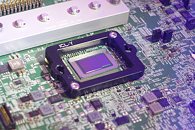
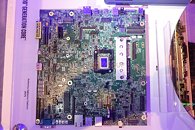
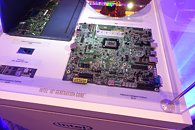
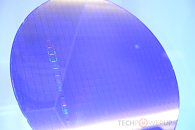
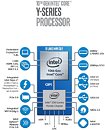
43 Comments on Intel "Ice Lake-Y" MCM Pictured Up Close
Also 8665u already boosts to 4.8Ghz so this is a slight downgrade for single core boost.
From Intel's PPT there is a 28W part, I have to assume the "Up to 4.1GHz" goes to the 28W part.
Plus the ram got a boost from 2400 to 3733/3200 wich alone will provide way more performance. We all making jokes about Intel in the last days, but these mobile chips are really really and I mean really interesting. Low power with thunderbolt 3 and great performance for gamers on a go, light video editing etc.
Its just a small step forward nothing more. And... its a quad core. Not exactly the optimal core count in 2019.
I've used these T480's from Lenovo, 15W chips with MX150 gpu, and my god they are slow, our users are complaining and once you have a chrome window open, ms teams, outlook, and join a meeting they are loading all threads and you have a lovely 2 ghz frequency so I'd gladly give up 400 mhz boost from 4ghz(i5-8550u) to 3.6 and gain the ipc + some frequency at all core load.
Desktop and server: intel is skrewed!
ark.intel.com/content/www/us/en/ark/products/193563/intel-core-i7-8665u-processor-8m-cache-up-to-4-80-ghz.html
With that said, it's not a bad CPU. It actually performs quite well for my use case (with writing software, some of which is multi-threaded.) It's just that it almost never runs at full boost. However, if you can keep the CPU cooled, it will do 3.0-3.6 on all 4 cores for very short durations, but once a steady state temperature is reach, you'll be seeing <=2.3Ghz again.
I'll give Intel this, boost on this laptop is quite frugal. If it has an opportunity to clock up because of less multi-core load or lower temperatures, it will take advantage of it rather quickly. To put this in perspective, a piece of software I work on will run tests on both my tower and this laptop in about the same amount of time and it's not I/O bound and is primarily single-threaded.
@Manu_PT thanks for helping me the 4.1 ghz answer. i went to sleep right after he replied to me asking the question lol
Also minus god knows how much percent IPC loss due to security mitigations.
2400 to 3200 RAM does not help much. Especially on CPU limited scenarios. Helps more on the iGPU side.
just wait for benches.
Navi gives me 0 reason to upgrade from GTX 1080.
www.notebookcheck.net/Intel-Iris-Plus-Graphics-655-GPU-Benchmarks-and-Specs.316632.0.html
Edit:
Dell XPS 13 7390 Ice Lake Core i7-1065 G7 vs i7-8665U Geekbench
browser.geekbench.com/v4/cpu/compare/13233129?baseline=13303489
IMO AMD's Zen2.0 with 7nm shrink looks better improvement.